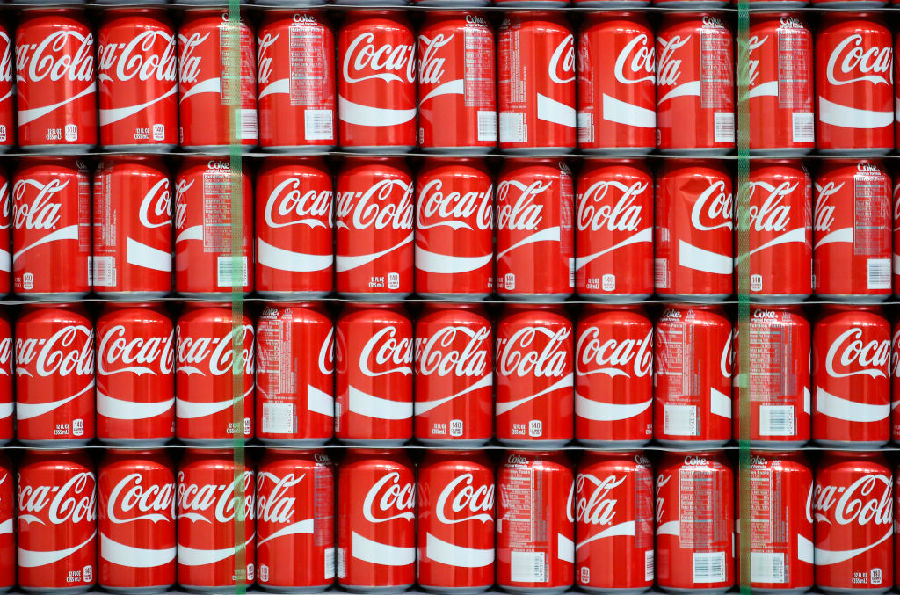After 125 teetotal years, Coca-Cola has decided to take the plunge and dabble with alcohol.
度过了滴酒不沾的125年后,可口可乐(Coca-Cola)决定冒险涉足酒类饮料业务。
The world’s biggest soft drinks company has chosen Japan to test its tolerance to the hard stuff by joining the growing Japanese market for “Chu-Hi” alcopops.
全球最大软饮料公司已选择在日本测试自己的“酒量”,它将加入日本日益增长的“Chu-Hi”气泡酒市场。
The gambit, which one senior Coke executive described as “unique in our history”, will propel the US company into a competitive arena dominated by Japanese brands such as Strong Zero, Highball Lemon and Slat.
此举被可口可乐一位高管形容为“我公司历史上独一无二”,它将使这家美国公司进入一个竞争激烈的市场,该市场目前由Strong Zero、Highball Lemon和Slat等日本品牌主导。
Jorge Garduno, president of Coke’s Japanese division, said the plan to enter the market “makes sense” and was an example of how the company was exploring opportunities outside its core areas. “Coca-Cola has always focused entirely on non-alcoholic beverages, and this is [a] modest experiment for a specific slice of our market,” he said, adding that he did not think people around the world should expect to see similar innovations.
可口可乐日本分公司总裁乔治?加杜尼奥(Jorge Garduno)表示,进入该市场的计划“是有道理的”,是该公司在其核心领域之外探索机会的一个例子。他说:“可口可乐一直以来只专注于非酒精饮料,而这是我们对一块特定市场的适度尝试。”他还表示,他不认为全球其他地区消费者会看到类似的创新产品。
There are hundreds of flavours of Chu-Hi, a canned alcoholic drink made from a distilled beverage called shochu and sparkling water. The Japanese market for the vodka-like spirit — distilled from potatoes, rice, barley or sugar — has expanded almost 40 per cent since 2011.
Chu-Hi是一种罐装酒精饮料,由日本“烧酒”和苏打水制成,有数百种口味。烧酒是与伏特加类似的烈酒,以蒸馏方式从发酵后的土豆、大米、大麦或蔗糖等原料酿造。自2011年以来,日本的烧酒市场扩大近40%。

Chu-Hi canned drinks mostly range in alcohol content between 3 and 8 per cent — a profile that has put them in competition with beer. The appeal of Chu-Hi has been enhanced by the relentless trial-and-error approach by major Japanese producers Kirin, Asahi, Takara and Suntory, which have released flavours that include yoghurt, acerola and wild basil.
Chu-Hi罐装饮料的酒精含量大多在3%至8%之间,这一特点让它们成了啤酒的竞争对手。麒麟(Kirin)、朝日(Asahi)、Takara和三得利(Suntory)等日本各大酿造商的不断尝试,提高了Chu-Hi的吸引力,它们推出了层出不穷的众多口味,包括酸奶、西印度樱桃和野生罗勒。
The move into alcohol comes as Coca-Cola, like other big food groups, has faced shrinking sales in its core business: fizzy drinks. As a younger generation of consumers shun sugar, Coke has invested in products in faster-growing segments, such as water and tea.
可口可乐进军酒精饮料市场之际,与其他大型食品集团一样,其核心业务汽水的销售正在萎缩。随着年轻一代消费者开始少喝含糖饮料,可口可乐已投资于饮用水和茶等快速增长领域的产品。
James Quincey, Coke’s chief executive, said last month that the company had launched more than 500 new products in 2017. “We’re making innovations in Coke, innovations with flavours, innovations with ingredients all around the world?.?.?.?taking it into different categories than it was in before,” he said.
可口可乐首席执行官詹姆斯?昆西(James Quincey)上月表示,该公司在2017年推出了500多种新产品。他说:“我们正在对可口可乐进行创新,包括口味的创新,用世界各地食材进行创新……让其进入与之前不同的品类。”












